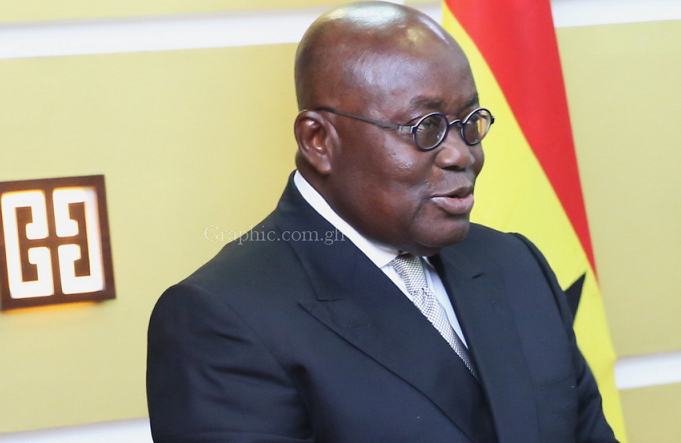
Is it 60 or 24 years of economic stability?
On March 6, 1957, Ghana was declared independent by its colonial master, Great Britain. The declaration of independence freed Ghana from the shackles of colonial rule and slavery.
Advertisement
However, 60 successive years down the line, it is difficult to determine, economically, whether Ghana is indeed 60 years or not.
This write-up is a continuation of an earlier publication on the evolution of Ghana’s political development after independence and its impact on her socio-economic advancement and growth.
Discussion is the previous feature ended on the Provisional National Defence Council’s (PNDC’s) approach to economic leadership.
PNDC’s Economic Approach Cont’d
The Economic Recovery Programme (ERP) was designed to curb inflation through stringent monetary, fiscal, and trade policies; increase foreign exchange inflows; direct the foreign exchange inflows to prioritised sectors of the economy; restore incentives for production in the economy; restructure economic institutions; rehabilitate infrastructure to increase production and export; increase supply of essential goods in the Ghanaian market.
ERP I (1983 - 1986): In phase I of the ERP, emphasis was on creation of incentives for private production; reduction in government expenditures; improvement in tax collection; reduction in budget deficit (6.3% of GDP in 1982; 0.1% of GDP by 1986); and easing government’s pressure on the banking system.
ERP II (1987 - 1989): Phase II of the ERP was characterised by divestiture of state assets through privatisation; introduction of more stringent foreign exchange reforms, leading to further devaluation of the Cedi; and introduction of foreign exchange bureaus in 1987 to minimise, if not eliminate, the activities of black market operators.
ERP III (1990 - 1991): In Phase III of the ERP, the country witnessed reduction in private corporate tax; private sector growth; more monetary reforms; improvements in repayments of international debt; improved economic reputation in the international community; and first entry into the international market after over two decades of exit.
Under the ERP, about $4.2billion was sourced for infrastructural projects in the country. More than half of the funding was obtained from external sources. Agricultural sector’s share of Government’s budget in 1983 equalled 10%; 1986 was 4.2 percent ; and 1988 equalled 3.5 percent The foregoing excluded foreign projects. Cocoa’s contribution to GDP was less than food crops. Cocoa received 9% of capital expenditures in the 1980s.
Due to its value, cocoa received about 67 per cent of the recurring expenditures in the agricultural sector. The Programme of Action to Mitigate the Social Costs of Adjustment (PAMSCAD) was introduced by the PNDC Government to minimise the barrage of criticisms against its policies.
PAMSCAD involved $85million. PAMSCAD was introduced to create 40,000 jobs in two years (1988 to 1990); improve the living conditions of artisans, small-scale miners, and poor individuals; and assist communities execute labour-intensive self-help projects.
Economic Summary
Ghana was the world leading producer of cocoa from 1911 to 1978; it controlled 40 per cent of the market share and set quality standards for cocoa between 1911 and 1978; cocoa contributed 60 per cent to total export earnings by 1980; the world price of cocoa dropped from £3,000 per tonne to £600 per tonne (1977 - 1986); the Ghana Cocoa Marketing Board offered ¢360 per load.
La Cote d’Ivoire and Togo offered ¢1,200 and ¢900 respectively to the Ghanaian farmers; about 15% of Ghana’s cocoa production was lost through smuggling between 1980 and 1981; and Ghana’s foreign exchange earnings were negatively impacted by the activities of smugglers.
Conclusion
Ghana’s economic history from 1957 to 1991 through 2017 has been chequered. It has been characterised by vicissitude and challenges in some cases, beyond economic measure.
The history reveals stability in the nine years (1957 to 1966) following independence; 15 years (1966 to 1981) following the nine years were characterised by dramatic change in governments, followed by11 years (1981 to 1992) of stable military administration; and twenty-four years (1993 to 2017) of stable democratic rule.
The incessant political instability contributed significantly to the deteriorating nature of infrastructural facilities constructed in the nine years after Ghana’s independence.
Under the Fourth Republic spanning from 1993 till date, one could affirm, with evidence, the development of new infrastructural facilities to accelerate the pace of the of the nation’s development and growth.
Evidence suggests that on paper, Ghana is 60 years old. However, in real economic terms, Ghana is actually 24 years (1993 through 2017) since most of its steady, tangible and intangible development projects are traced to the last 24 years.
The economy’s lower middle income status was achieved within the last 24 years. This implies accelerated development thrives in a stable democratic environment.
Therefore, we must eschew negative political trajectory and complacency; and guard “jealously” against the current democratic dispensation to assure the nation’s rapid development to facilitate its transition from a lower middle income to an upper middle income economy. — GB




